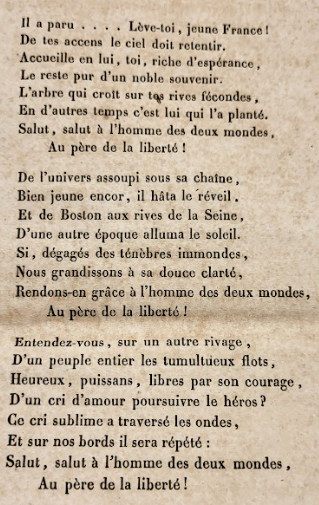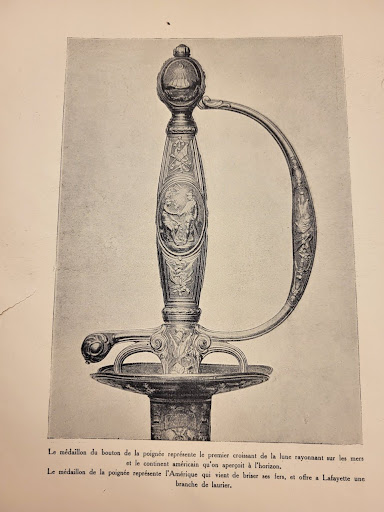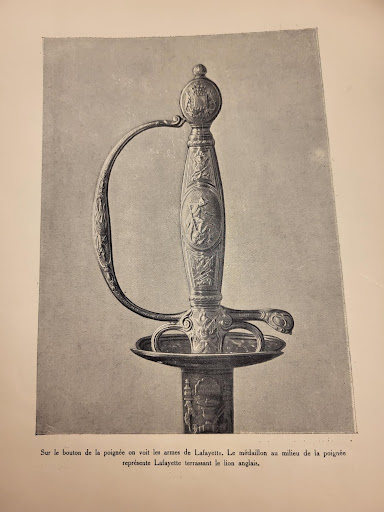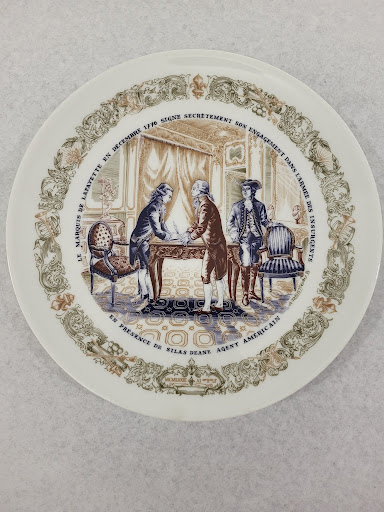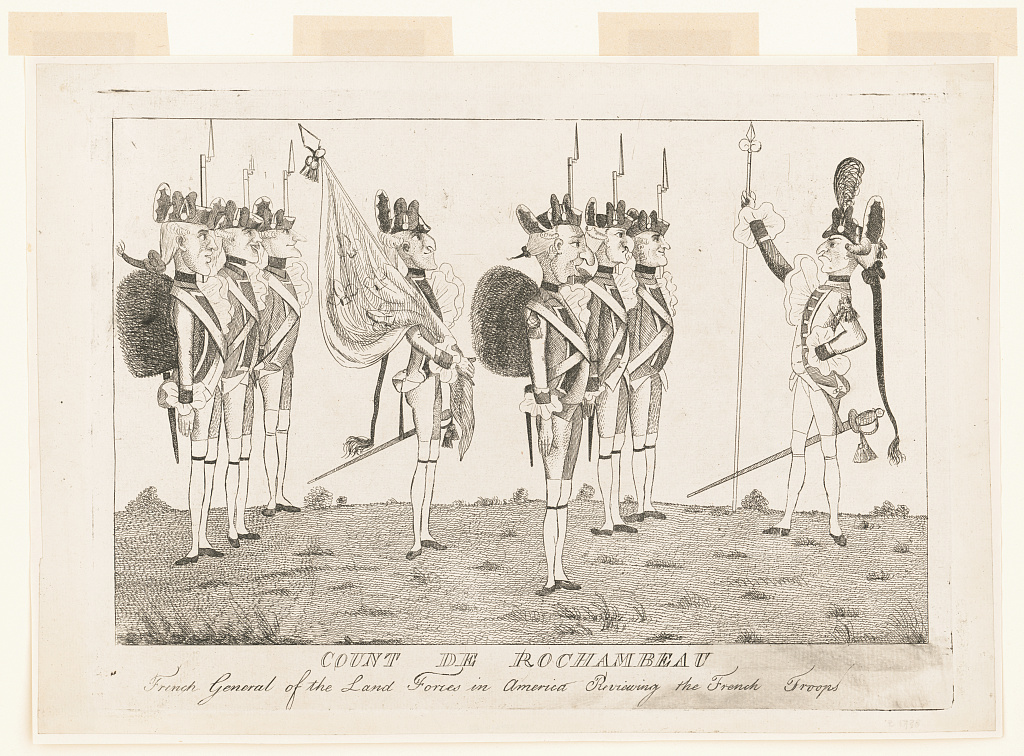Sarah Jaggi, Ridgeline High School (Cache County School District), Millville, Utah

Gilbert du Motier, marquis de Lafayette, Joseph Bose, 1790. Massachusetts Historical Society.
DESIGN LEVEL: Middle-High School, French Immersion Classroom
Overview
This lesson is designed to teach freshmen French immersion students about French involvement in the Revolutionary War and how to analyze primary sources. It was created assuming a basic understanding of the American Revolution as taught in most American middle/junior high schools.
This lesson is intended for use with French immersion students, who have a working knowledge of the French language based on multiple years of French immersion instruction. More specifically, this is intended as part of a course on French history focused on revolutionary movements, that begins in the latter part of the eighteenth century. This lesson, therefore, is one of the first in the course, and uses a variety of primary sources to help students understand how to understand and analyze resources such as texts, engravings, sculptures, maps, among others. In addition to teaching students about France’s role in the Revolution, a main goal of this lesson is to prepare students to use primary, historical sources throughout the course.
The foundational reference for all of the events covered in this lesson is the graphic novel La route d’indépendance . . . de Versailles à Yorktown by Philippe Cenci. This is not a comprehensive treatment; the events were chosen because of their importance and also because of their representation in the graphic novel. This book is not widely available, but short summaries of the happenings could easily replace the excerpts from the book.
This begins with a discussion of Lafayette as a bridge between what students already know (thank you Lin-Manuel Miranda). Once the connection is made, the lesson intentionally does not address Lafayette, but sources and events with Lafayette could easily be included, if desired.
Objectives
Students will:
- Conduct guided group research of primary and secondary resources focused on key events in the American Revolution involving the French.
- Analyzing these resources, then write a summary and analysis of their event incorporating both the secondary and primary sources that will include the following:
a) A description of the event.
b) An analysis of the primary source and how it helps understand the event.
c) An interpretation of how this was important to the Revolution. - In groups, present their findings with slides to the class.
Materials
- Révolution Française slide deck by Ms. Jaggi.
- Gilbert du Motier, marquis de Lafayette, Joseph Bose, 1790. Massachusetts Historical Society.
- “Guns and Ships” from Hamilton: An American Musical, YouTube.
- Notice sur le général La Fayette: (Imprimée par extrait dans la Biographie universelle) [Hymne about marquis de Lafayette by Cesar Bertholon, p. 15], M.A. Boullee. Paris, 1841. The Society of the Cincinnati.
- La Route de l’Indépendance …de Versailles à Yorktown, Louis-Bernard Koch, author, Philippe Cenci, illustrator. Paris: Editions du Triomphe/la Société des Cincinnati de France, 2009.
- Le marquis de Lafayette en decembre 1776… decorative plate, Henri D’Arceau Assiette L. et Fils. France: Limoges, 1973. The Society of the Cincinnati.
- Hymne à Lafayette graphic organizer by Ms. Jaggi.
- Fiche: Source Primaire graphic organizer by Ms. Jaggi.
- Sarratoga : le 17 octobre 1777, le general Burgoine avec 6040 soldats bien disciplines met bas les armes devant les milices Americaines nouvellement tirees de l’agriculture et conduite par Horatio Gates, Louis-Francois-Sebastien Fauvel, artist, François Godefroy, engraver, Paris, ca. 1784. The Robert Charles Lawrence Fergusson Collection.
- Treaty of Alliance with France, February 6, 1778. National Archives.
- Count de Rochambeau – French General of the Land Forces in America Reviewing the French Troops, 1780. Library of Congress.
- Carte de la partie de la Virginie ou l’armée combinée de France & des États-Unis de l’Amérique a fait prisonnière l’armée anglaise commandée par Lord Cornwallis le 19 octobre, 1781: avec le plan de l’attaque d’York-town & de Glocester published by Chez Esnauts et Rapilly …, Paris, ca. 1782. The Robert Charles Lawrence Fergusson Collection.
- Original Society of the Cincinnati membership diploma for François Aymar comte de Monteil. Mount Vernon, Va., 1784-1793. The Robert Charles Lawrence Fergusson Collection
Recommended Time
Five 50-60 minute class periods (one instructional week).
Day 1:
PART 1: The materials about Lafayette (images of which are all contained in Ms. Jaggi’s Révolution Française slide deck) are used both to introduce the topic and to model the analysis and interpretation of primary sources.
Display a projected copy of the portrait “Marquis de Lafayette” and have students in pairs observe the painting, describe what they see (without interpreting), and then make deductions (5 w’s). Students will probably be split between who recognizes the figure and who doesn’t. After discussing with partners, the class shares their observations with additions and comments by the teacher. Once students have identified Lafayette as the man in the portrait, play the first minute of the clip “Guns and Ships” to help students make connections to what they already know about Lafayette.
PART 2: Pass out a copy of the Lafayette “hymne” to each student. Model textual analysis of the first stanza with the entire class. A student should read the stanza out loud, then ask students to identify unknown words and help create a definition. Students will identify key words, assisted by the teacher. Finally, the class will note the symbolism and the meaning of the first stanza.
In small groups, students will repeat the process for stanzas 2 and 3. Students will read each stanza, and identify and define unknown words in the box on the side of the Hymne à Lafayette graphic organizer. Students will then identify 5 words or phrases as key.
After the groups complete the entire hymne, students will write one word or phrase on the board, or use a QR code to create a word cloud. The teacher and class should discuss words, and the reasons for which they have been chosen, working towards a global understanding of the poem.
Day 2:
The class will review the information about Lafayette and then brainstorm other ways to celebrate him and his achievements.
Project the images of Lafayette’s sword and give the background (awarded by Congress, 1779). Lead a class discussion using the see/think/wonder model, focusing on the symbols on the sword’s hilt and why they were chosen to honor Lafayette.
Using this as a transition, explain the week’s assignment to students. In small groups, they will be studying an event of French involvement in the American Revolution. Each group will use a secondary source (La route d’indépendance) and a different primary source. They will read the selected pages of the secondary source and then analyze the primary source to better understand the event and its importance in the Revolution. Students will use the Fiche: Source Primaire graphic organizer to write down their ideas.
Day 3:
Today’s class will be used to complete analysis of their assigned primary source and finish the graphic organizer. Once students understand the source and have organized their thoughts, they can begin preparing their presentation. Each student is assigned a specific role for the presentation (see slide 13 from the Révolution Français slide deck).
Day 4:
During today’s lesson, students will complete their slides and presentation. Circulate the classroom to give feedback and suggest improvements while students practice presenting to ensure a smooth delivery of their material.
Day 5:
Today, student groups will present their event and primary source to the class. Students will take notes during the presentations and use them to complete the final writing portion of this lesson, where they will answer the question: “How did France contribute to America’s war for independence?”
Extension
This activity can be extended by having students create an homage of their own to another French person or event in the Revolutionary War.
Standards Addressed
COMMON CORE STATE STANDARDS
FOR ENGLISH LANGUAGE ARTS & LITERACY IN HISTORY/SOCIAL STUDIES, SCIENCE, AND TECHNICAL SUBJECTS
SUBJECT AREA: CIVIC PREPARATION
● Engage in deliberative, collaborative, and civil dialogue regarding historical and current issues.
● Apply knowledge of governmental structure, historical concepts, geographic interrelationships, and economic principles to analyze and explain current events.
● Develop and demonstrate values that sustain America’s democratic republic, such as open-mindedness, engagement, honesty, problem-solving, responsibility, diligence, resilience, empathy, self-control, and cooperation.
SUBJECT AREA: HISTORICAL ANALYSIS AND SKILLS DEVELOPMENT
● Classify and analyze fact and opinion from multiple points of view, and secondary sources as related to historical events.
● Locate primary and secondary sources for the research topic and summarize in writing the findings.
● Read and comprehend literature and informational text, including seminal U.S. documents of historical and literary significance.
SUBJECT AREA: READING, WRITING, SPEAKING, AND LISTENING
● Collaborate, express and listen to ideas, integrate and evaluate information from various sources.
● Write for a variety of tasks, purposes, and audiences using appropriate grammar/conventions, syntax, and style.
SUBJECT AREA: HISTORY (REVOLUTIONARY WAR)
Standard 1 3.1
Students will use primary sources to identify the significant events, ideas, people, and methods used to justify or resist the Revolutionary movement.
Standard 1 3.2
Students will compare and evaluate historians’ interpretations of the significant historical events and factors affecting the course of the war and contributing to American victory.
Standard 1 3.3
Students will use primary sources to compare the contributions of key people and groups to the Revolution.
Standard 1 3.4
Students will explain how the ideas and events of the American Revolution continue to shape American identity.
SUBJECT AREA: HISTORICAL ANALYSIS AND SKILLS
● Interpret and synthesize evidence from primary and secondary sources to construct an argument.
● Corroborate sources of evidence and place interpretations within historical contexts.
UTAH STATE STANDARDS
READING AND WRITING
Standard 9-10.R.9
Determine or clarify the meaning of unknown and multiple-meaning words and phrases choosing flexibly from a range of strategies.
Standard 9-10.W.1
Write arguments to support claims in an analysis of complex topics or texts using logical reasoning and relevant evidence, and provide a conclusion that follows from and supports the argument presented.
Standard 9-10.R.11
Analyze how an author’s geographic location, identity or background, culture, and time period affect the perspective, point of view, purpose, and implicit/explicit messages of a text.
Standard 9-10.W.2
Write informative/explanatory texts to examine and convey related ideas and information clearly and accurately through the effective selection, organization, and analysis of content, and provide a conclusion that follows from and supports the information or explanation presented.
US HISTORY
Standard 1 3.1
Students will use primary sources to identify the significant events, ideas, people, and methods used to justify or resist the Revolutionary movement.
Standard 1 3.2
Students will compare and evaluate historians’ interpretations of the significant historical events and factors affecting the course of the war and contributing to American victory.
Standard 1 3.3
Students will use primary sources to compare the contributions of key people and groups to the Revolution.
Standard 1 3.4
Students will explain how the ideas and events of the American Revolution continue to shape American identity.
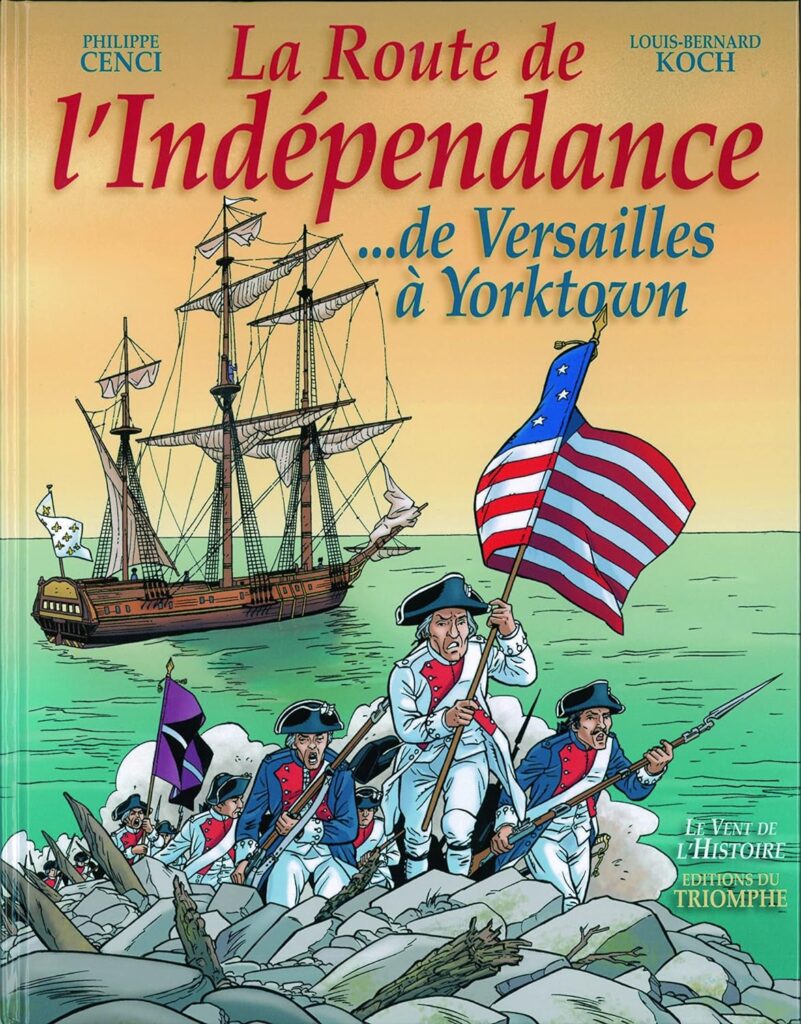
La Route de l'Indépendance ...de Versailles à Yorktown
Louis-Bernard Koch, author, Philippe Cenci, illustrator
Paris: Editions du Triomphe/la Société des Cincinnati de France, [2009]Graphic novel in French entitled "The Road to Independence ...from Versailles to Yorktown." Available with English translation page.
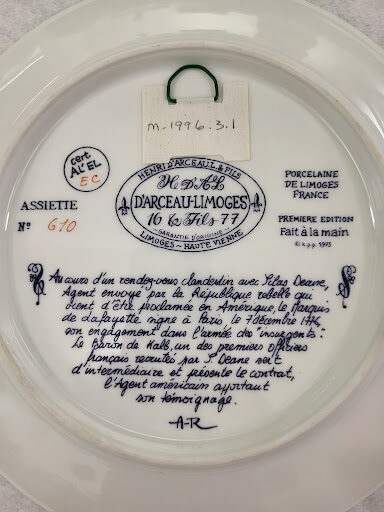
Le marquis de Lafayette en decembre 1776... decorative plate
Henri D’Arceau Assiette L. et Fils
France: Limoges, [1973]The Society of the Cincinnati
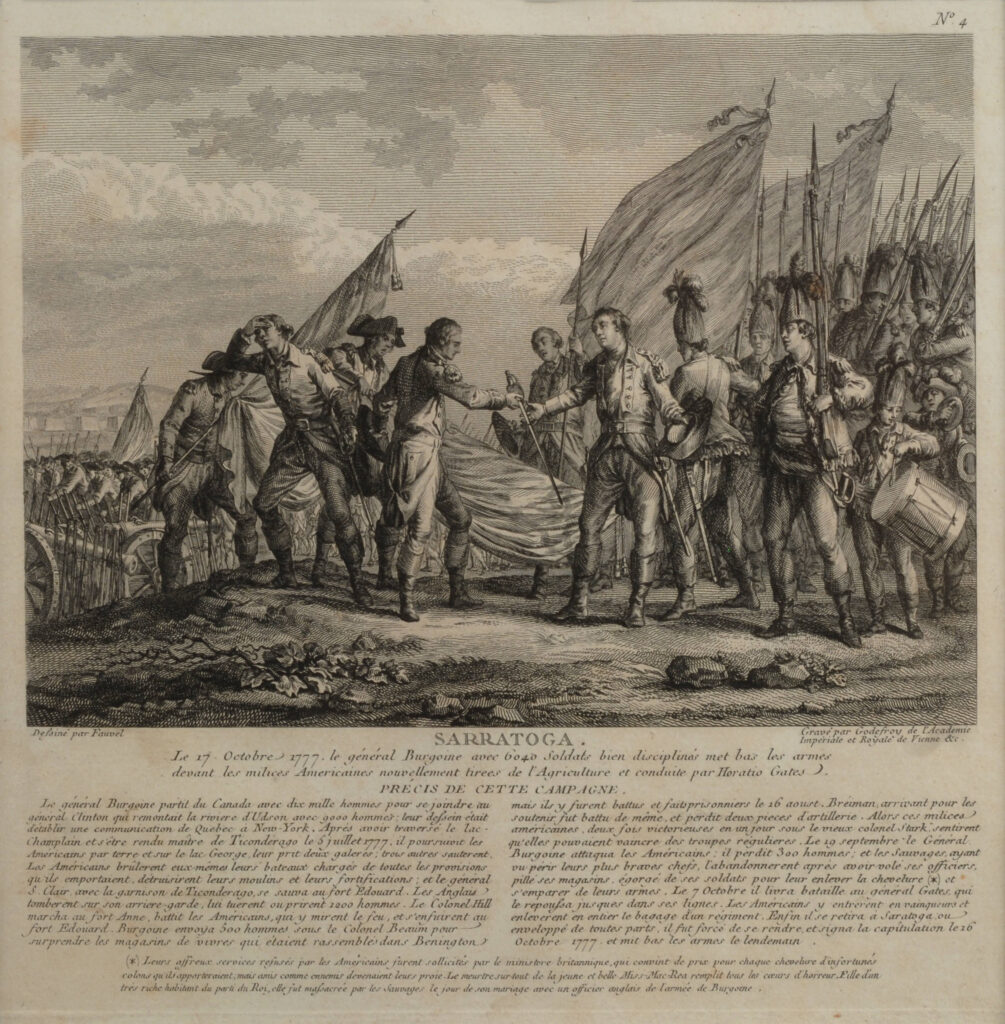
Sarratoga : le 17 octobre 1777, le general Burgoine avec 6040 soldats bien disciplines met bas les armes devant les milices Americaines nouvellement tirees de l'agriculture et conduite par Horatio Gates
Louis-Francois-Sebastien Fauvel, artist, François Godefroy, engraver
Paris, [ca. 1784?]The Robert Charles Lawrence Fergusson Collection
Scene of Borgoyne surrendering his sword to General Gates at Saratoga. Below the title is a description of the battle, in French, including a reference to Jane McCrea's death. She was the fiancee of a Tory soldier with Borgoyne who was slain by a Wyandot Indian escort. The Americans used this event to encourage a large number of New England militia to turn out for the battle. This etching is Plate No. 4 of "Recueil d'estampes representant les différents événemens de la Guerre qui a procuré l'indépendance aux Etats Unis," 1784 de l'Amérique.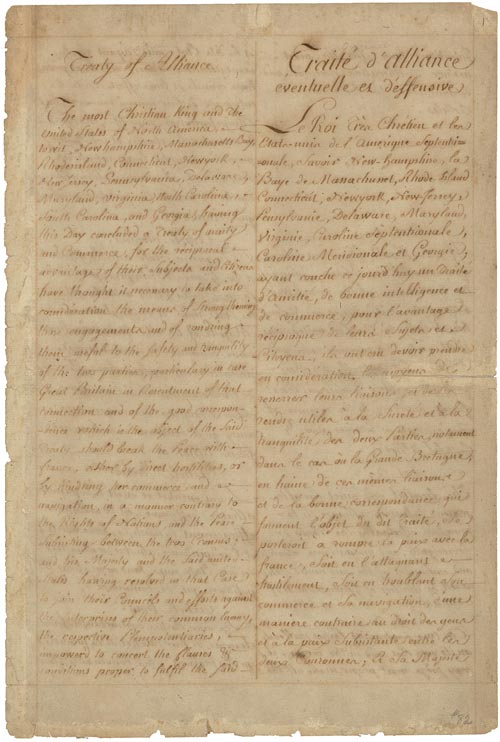
Treaty of Alliance with France
February 6, 1778National Archives
The American Colonies and France signed this military treaty on February 6, 1778. It formalized France’s financial and military support of the revolutionary government in America.Believing that they would benefit militarily by allying themselves with a powerful nation, the Colonies formed an alliance with France against Great Britain during the Revolutionary War.
According to this first military treaty of the new nation, the United States agreed to provide a defensive alliance to aid France should England attack.
American diplomats Benjamin Franklin, Silas Deane, and Arthur Lee negotiated in France on behalf of the American Colonies. The treaty is written in both English and French.
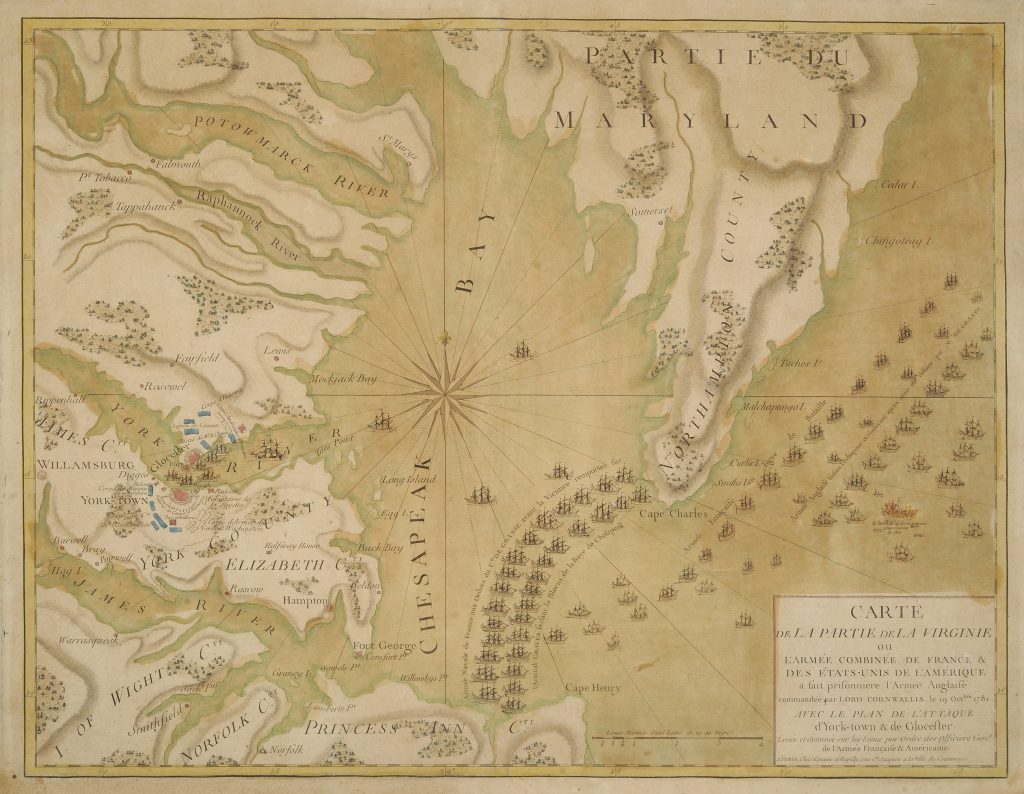
Carte de la partie de la Virginie ou l'armée combinée de France & des États-Unis de l'Amérique a fait prisonnière l'armée anglaise commandée par Lord Cornwallis le 19 octobre, 1781:avec le plan de l'attaque d'York-town & de Glocester
Paris: published by Chez Esnauts et Rapilly..., [ca. 1782]The Robert Charles Lawrence Fergusson Collection
This map, of French origin, depicts the action of the Yorktown campaign, focusing on the positions of the French and English fleets. It emphasizes, in dramatic schematic form, the key role of the French navy in sealing off the entrance of the Chesapeake Bay, as well as the alignment of ground forces in and around Yorktown and Gloucester.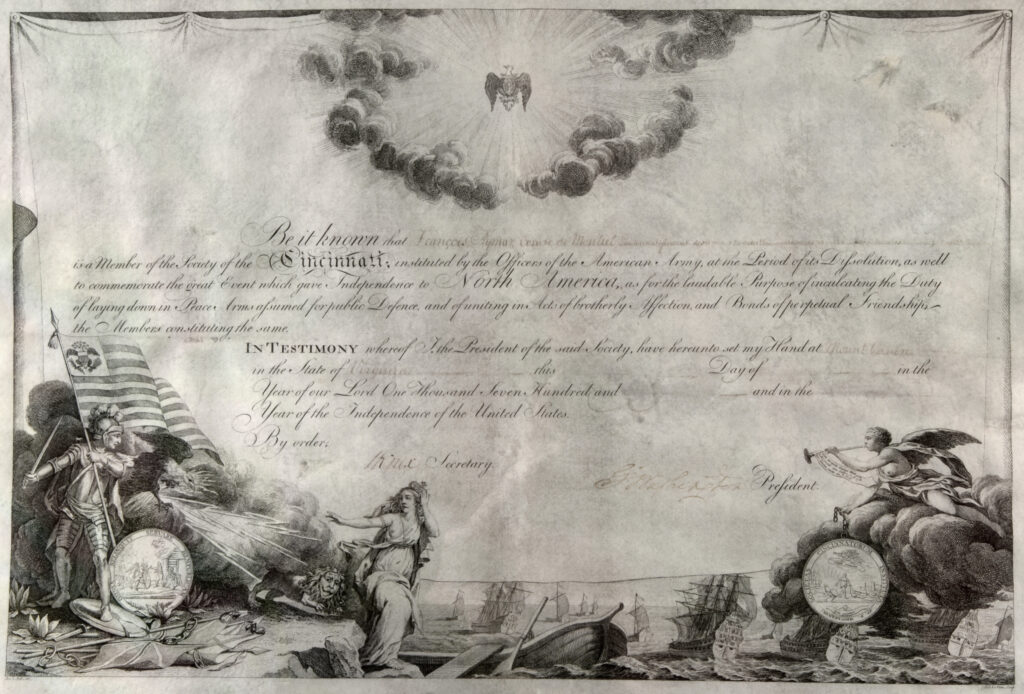
Original Society of the Cincinnati membership diploma for François Aymar comte de MonteilThe Society of the Cincinnati
Mount Vernon, Va., [1784-1793]
The Society of the Cincinnati
Mount Vernon, Va., [1784-1793]The Robert Charles Lawrence Fergusson Collection
Designed by Pierre L'Enfant, the diploma represents American liberty as a strong man armed, bearing in one hand the union flag, and in the other a drawn sword.Drawn by Augustin-Louis La Belle & engraved by Jean-Jacques-Andre Le Veau; text engraved by Robert Scot.

